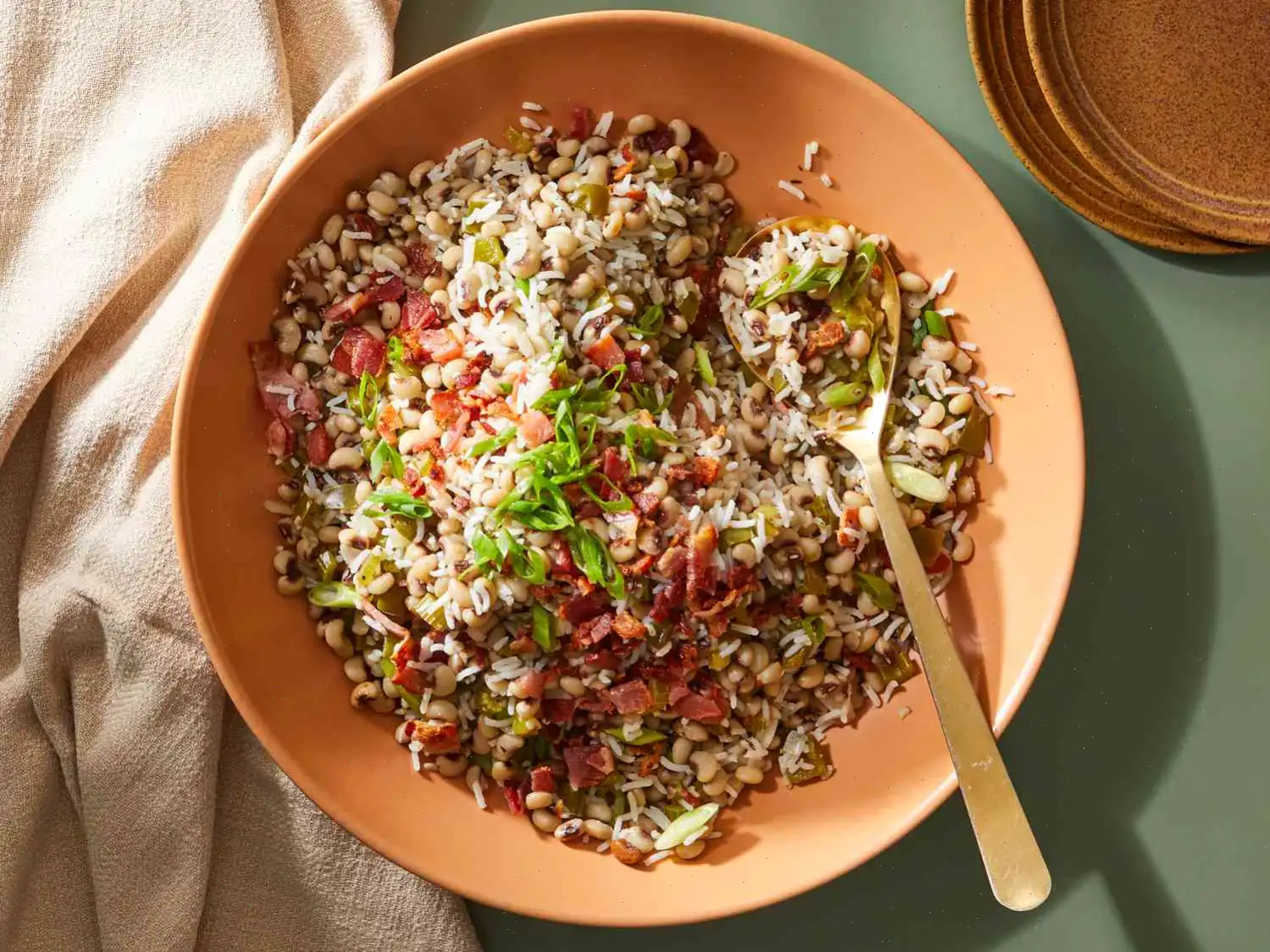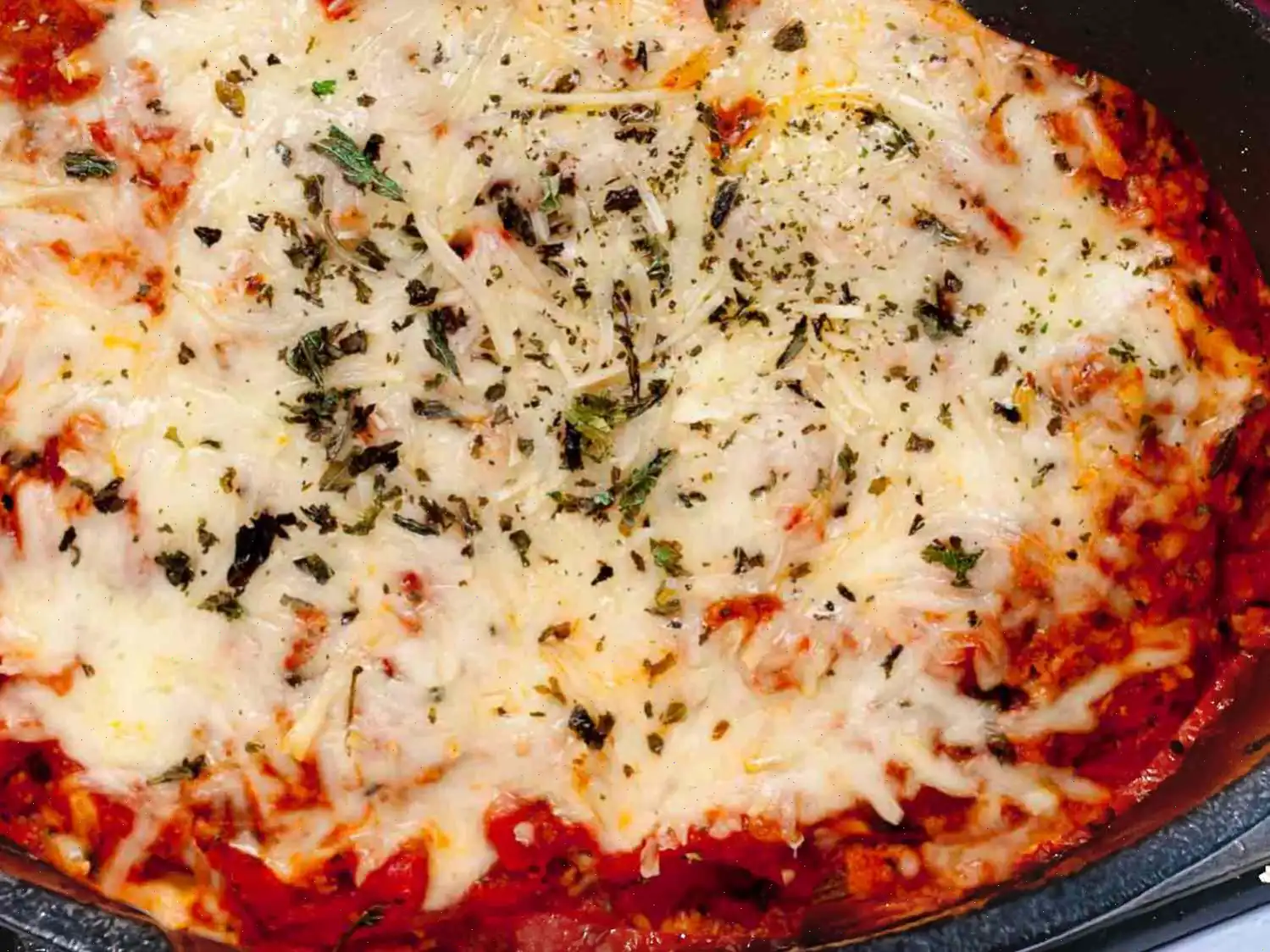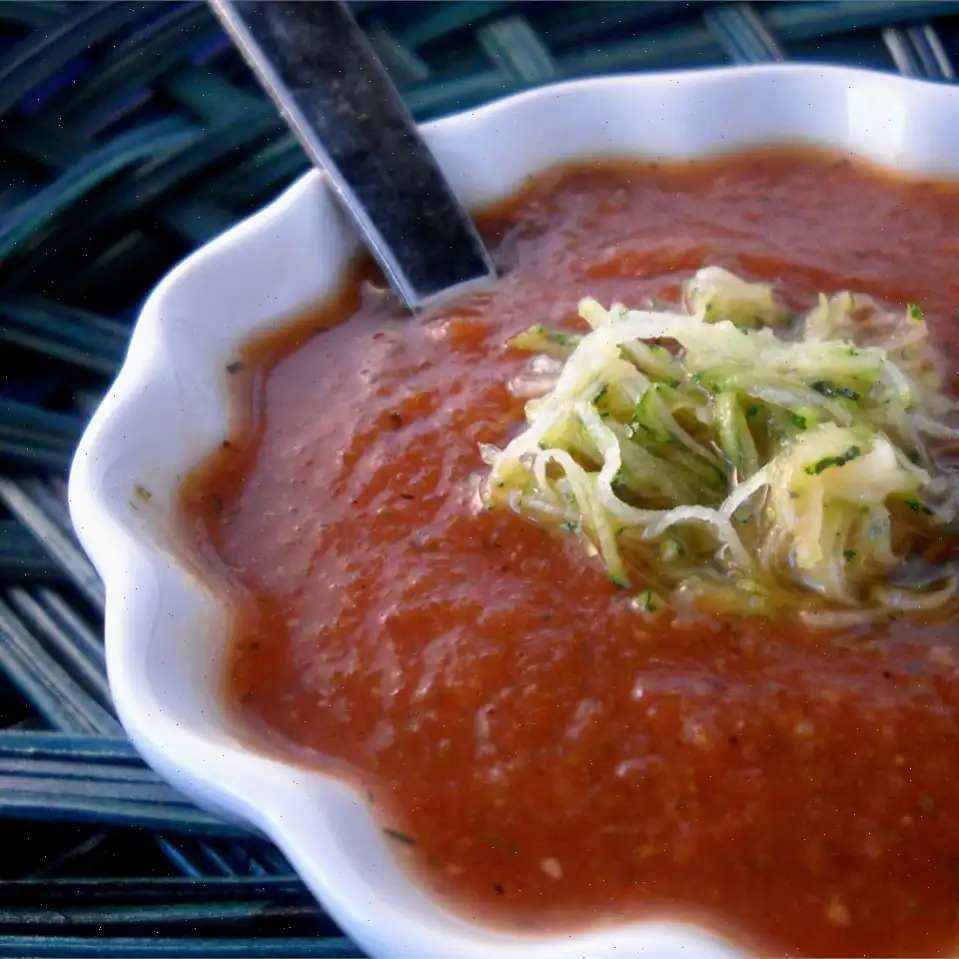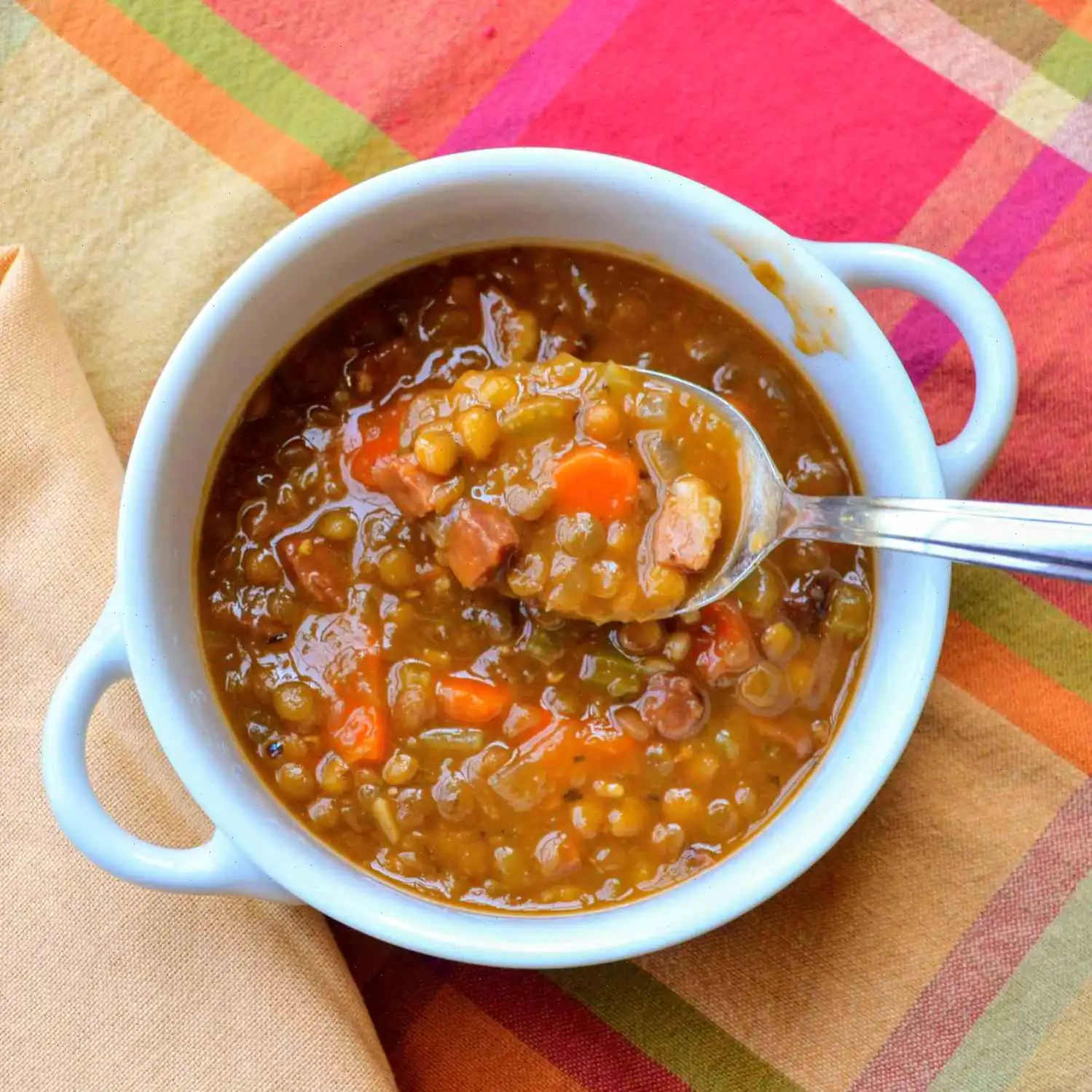
Hoppin’ John Recipe
Ingredients
- 6 slices bacon, chopped
- 1/2 cup chopped onion
- 1/2 cup chopped celery
- 1/2 cup chopped green bell pepper
- 3 cloves garlic, minced
- 1/2 teaspoon kosher salt
- 1/2 teaspoon freshly ground black pepper
- 1/2 teaspoon dried thyme
- 1/4 teaspoon cayenne pepper
- 2 (12 ounce) packages frozen black-eyed peas
- 4 cups reduced-sodium chicken broth
- 2 cups cooked long grain rice
- 1/4 cup chopped green onions, or as needed
Directions
- Gather all the ingredients to ensure everything is ready.
- In a 6-quart Dutch oven, cook the bacon over medium heat until crispy, about 5 minutes. Transfer the bacon to a paper towel-lined plate to drain.
- Drain all but 1 tablespoon of bacon drippings from the Dutch oven.
- Add the chopped onion, celery, green bell pepper, minced garlic, salt, black pepper, thyme, and cayenne pepper to the Dutch oven. Cook, stirring occasionally, for about 5 minutes until the vegetables are tender and beginning to brown.
- Add the frozen black-eyed peas and chicken broth. Bring the mixture to a boil.
- Once boiling, reduce the heat, cover the pot, and let it simmer for about 20 minutes, or until the peas are tender but not mushy.
- Drain the peas, reserving some of the cooking liquid.
- Stir in the cooked rice and bacon. Add enough of the reserved liquid to achieve a saucy consistency, and stir well to combine.
- Season to taste with additional salt, if needed.
- Garnish with chopped green onions before serving.
Nutrition Facts (per serving)
| Calories | 212 |
|---|---|
| Fat | 4g |
| Saturated Fat | 1g |
| Cholesterol | 9mg |
| Sodium | 515mg |
| Total Carbohydrates | 33g |
| Dietary Fiber | 6g |
| Total Sugars | 4g |
| Protein | 13g |
| Vitamin C | 9mg |
| Calcium | 49mg |
| Iron | 3mg |
| Potassium | 476mg |
Percent Daily Values are based on a 2,000-calorie diet. Your daily values may be higher or lower depending on your calorie needs. Nutrient information is based on available data and may vary. For personalized advice, please consult a healthcare professional.
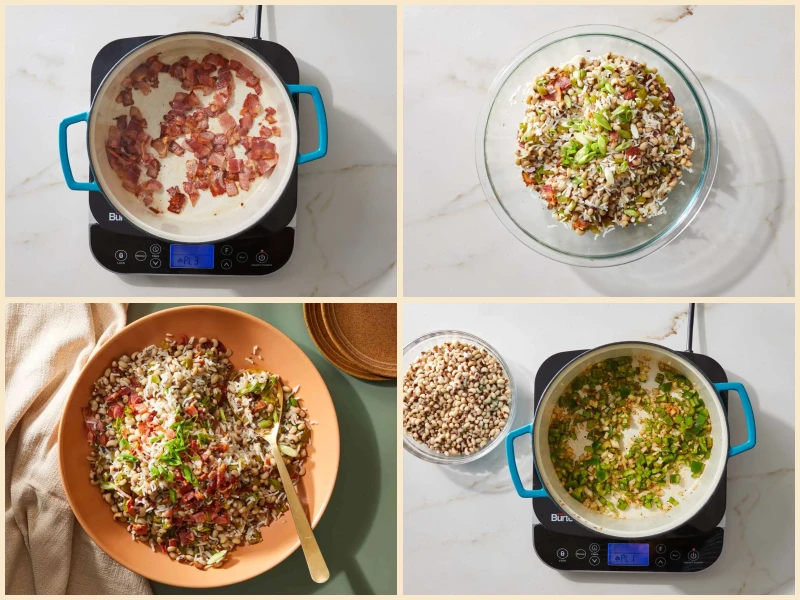
The History and Cultural Significance of Hoppin John
Hoppin John is a traditional Southern dish with deep roots in American history, particularly in the Lowcountry regions of South Carolina and Georgia. The dish dates back to the early 19th century, and it is believed to have African origins, brought to the Americas by enslaved Africans who used black-eyed peas as a staple food. The name Hoppin John itself may derive from the Gullah word Hoppin John, which was used to refer to black-eyed peas. Historically, the dish was associated with New Years Day, as eating black-eyed peas and rice was thought to bring prosperity, good luck, and health for the coming year.
Regional Variations and Unique Characteristics
While Hoppin John is commonly made with black-eyed peas, rice, and pork, regional variations exist across the Southern United States. In South Carolina, the dish often features smoked ham hocks or country ham, while in Georgia and other parts of the Southeast, bacon or salt pork is more common. Some recipes incorporate onions, celery, bell peppers, and a touch of cayenne pepper for extra flavor, reflecting the influence of Creole and Cajun cuisine. In coastal regions, additions like okra or tomatoes can sometimes be found, showcasing the versatility of this classic dish.
Comparison to Similar Dishes
Hoppin John is often compared to dishes like red beans and rice or peas and rice found throughout the Caribbean and Latin America. However, Hoppin John is distinct due to its use of black-eyed peas instead of red kidney beans or pigeon peas, as well as the traditional New Years symbolism attached to the dish. Unlike generic bean-and-rice dishes, Hoppin John is deeply embedded in Southern culture and ritual, particularly in celebrations where luck and prosperity are emphasized.
Typical Serving Occasions
Traditionally, Hoppin John is served on New Years Day to ensure good fortune. It is often accompanied by collard greens, cornbread, or other Southern side dishes. Beyond holiday meals, it can also be served as a hearty lunch or dinner, either as a main course or a comforting side. In many Southern households, it remains a staple at family gatherings, potlucks, and Sunday dinners, where its warm, savory flavor brings a sense of home and nostalgia.
Interesting Facts
- Eating Hoppin John with black-eyed peas is thought to bring luck because the peas resemble coins, symbolizing wealth and prosperity.
- The leftover rice from Hoppin John is often called Skippin Jenny in some Southern traditions, another playful term associated with good fortune.
- The dish has inspired variations around the world, including in Caribbean cuisine, where it often features coconut milk and local spices.
- Hoppin John is mentioned in historical documents from the 1800s as a simple but essential part of Southern New Years celebrations, linking food with cultural tradition for generations.
Overall, Hoppin John is more than just a comforting rice-and-beans dishit is a culinary tradition rich with history, regional pride, and symbolic meaning, continuing to delight Southern tables and beyond.
FAQ about Hoppin’ John Recipe
Comments
FairSoy6036
10/06/2025 01:52:54 PM
Grandma always added summer’s sweet corn to the mix, served with fat back, pan fried brim and mustard greens. A family meal standard since the civil war, it was in our weekly rotation year round until my momma passed in 2005.
William Freker
03/06/2025 12:55:14 AM
A delicious blend of spices and flavors. Don’t hesitate to be exploratory but fine the way it is written
Kevin Adams
05/19/2024 08:24:29 PM
Bro, I feel unstoppable after eating this.




